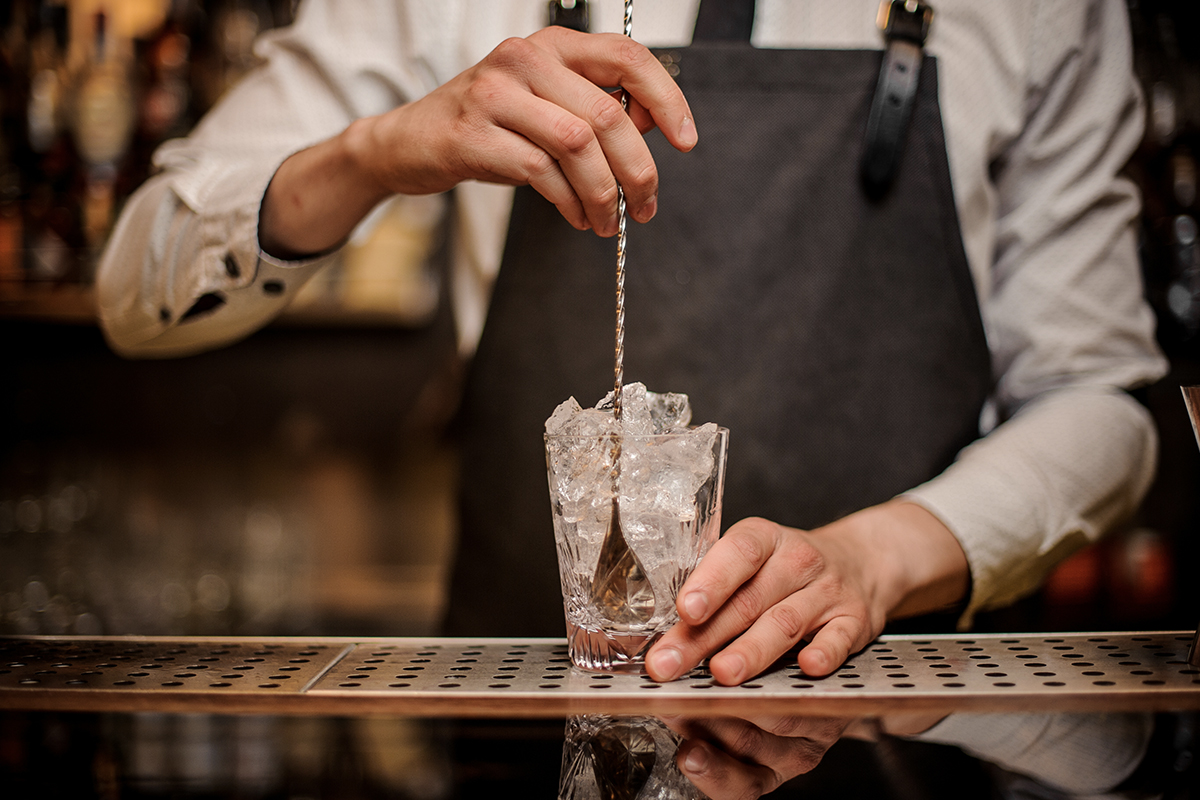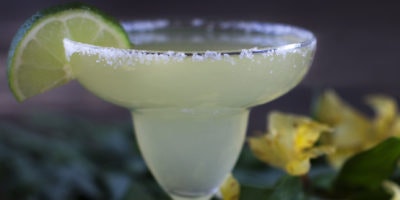Making cocktails at home may have you wondering what all those specialty bar tools are for. What’s with those fancy bar spoons? Do you really need a special mixing glass? And how do you use that juicer, anyway? This bar tools guide will help you sort things out.
Bar Tools Guide:
Mixing Vessels & Measuring Tools
If you’re going to mix a cocktail, you need something to mix it in. Broadly speaking, you’ll need one vessel for shaken cocktails and another for stirred. Cocktails that use citrus juice, cream, egg whites, or similar ingredients are almost always shaken; spirit-forward cocktails like Old Fashioneds and Martinis are typically stirred.

Shakers
Cobbler shaker—has three parts: a shaking tin, a lid, and a small removable cap with a built-in strainer.
Boston shaker—consists of two parts: a shaking tin and a mixing glass (or smaller metal tin) that fit together. This type of shaker is generally preferred in professional bar settings where speed is of the essence, but it works equally well in the home. Pro tip: assembling the two pieces of a Boston shaker at an angle will make them easier to knock apart after shaking.
Mixing Glass
For stirred drinks, you may want to get a dedicated mixing glass. These are wide glasses that have a tapered lip for easy pouring. That said, a mixing glass is partly about style; any glass that’s big enough to contain a cocktail and ice cubes while stirring will get the job done, including the glass half of a Boston shaker.
Jigger
If you’re making a Gin & Tonic or Whiskey Soda, you can probably measure it by eye. For anything more complex, a precise measuring tool helps ensure consistency and strike the right balance.
Jiggers are like mini measuring cups for your cocktails, usually coming with a small and a large measure fused together in the middle. Measurements in the range of ¼ oz to 2 oz are useful for cocktails, and you may want to get a couple in different sizes. Many jiggers have internal markings for added versatility, and taller, narrower jiggers allow for more precision.
Bar Tools Guide: Spoons & Strainers
Stirring Spoons
If you’re shaking a cocktail, you don’t need any tools but the shaker. But for stirred drinks, you need something to move the ice around.
Long bar spoons serve the dual functions of measuring small amounts of syrups or liqueurs and stirring cocktails. A well-designed bar spoon is ideally suited to both of these tasks, and looks stylish to boot. If you’re making cocktails frequently at home, it’s well worth springing for a nice one. That said, there are practical alternatives already likely in your kitchen: a teaspoon makes a good substitute measure, and a chopstick is effective for stirring.

Strainers
Once you’ve measured your ingredients and shaken or stirred your cocktail, you have to get it from the mixing vessel to the glass. That’s where a strainer comes in. (If you’re using a three-piece cobbler shaker, the lid will have a strainer built in.)
Hawthorne strainer—this is the strainer that comes with a metal coil at the edge, the tighter the better. It fits over a shaker tin or mixing glass while you pour into the serving glass.
Julep strainer—rather than a coil, a julep strainer uses a wide, bowl-shaped metal plate with holes in it to let a cocktail pour through while retaining the ice. In conventional practice, a julep strainer is preferred for stirred drinks, but this is largely a stylistic choice—a Hawthorne strainer also works fine.
Fine strainer—also known as a tea strainer, this is a fine mesh strainer used in addition to a Hawthorne strainer for shaken drinks. It’s held above the serving glass to strain more thoroughly than the Hawthorne’s coil. It helps remove small shards of ice or, in drinks that contain mint or other herbs, tiny bits of leaf.
Bar Tools Guide: Juice Extractors
In a bar setting, large mechanical juicers make it possible to go through entire boxes of citrus with relative ease. At home, you’re probably fine with a simple hand-held juicer. Definitely do take the effort to use fresh juice: The difference between freshly extracted citrus juice and the stuff that’s bought pre-bottled is enormous.
Juicer
This is a simple device for extracting fresh juice from lemons and limes; larger ones may also come in handy for oranges. These are simple to use by squeezing cut fruit, but there is one non-obvious point to note: the citrus goes into the juicer cut-side down to maximize extraction.

Reamer
Rather than squeezing, reamers work by jamming into a piece of fruit to extract the juice. These can be useful for oranges and grapefruits that are too large for hand-held juicers.
Muddlers
Another way to extract juices and flavors from fruit or herbs is to mash them in the bottom of the shaker, which is where a muddler comes in handy. This is a blunt, hand-held length of wood or other material that’s shaped for smashing fruit and herbs. Look for one that feels good in the hand and is long enough to reach to the bottom of your preferred mixing vessel.
Bar Tools Guide: Other Tools
Ice Molds
If you’re lucky, your freezer makes good ice cubes and your tap water tastes great. If not, you may want to use ice molds and bottled water. You’ll also want special molds if you’d like to make large, individual cubes for drinks like an Old Fashioned.
Silicone ice molds are easy to use. Smaller cubes, around 1-inch, are great for mixing or serving drinks on the rocks. Large cubes, around 2-inches, are ideal for spirit-forward cocktails. If you want to get really fancy, you can buy complex molds that produce perfectly clear ice, but these take up more space in your freezer and have limited production capacity.
Garnishing Tools
The finished cocktail is finally in the glass. Time to drink it? Well, maybe not quite yet. The right garnish provides the finishing touch.
Y-peeler—when you want to express citrus oils over a drink, you need a tool that can cut off a wide swatch of peel without digging into the pith and flesh of the fruit. Y-shaped peelers do this easily, producing wide pieces of peel for garnishing.
Channel knife—this is a small blade that can be run around the circumference of a fruit, producing a long spiral of skin or peel that works as a decorative garnish.
Cocktail picks—these small metal picks are used to make cherries, olives, or other treats accessible to the drinker without using their fingers, and add a touch of elegance.
Now that you’ve read our bar tools guide, it’s time to put it to good use!
With Distiller, you’ll always know what’s in the bottle before you spend a cent. Rate, Review, and Discover spirits. Head on over to Distiller, or download the app for iOS and Android today!
Want to enjoy Distiller ad-free? Join Distiller Pro today to support the Distiller platform and keep ads off of your screen.


